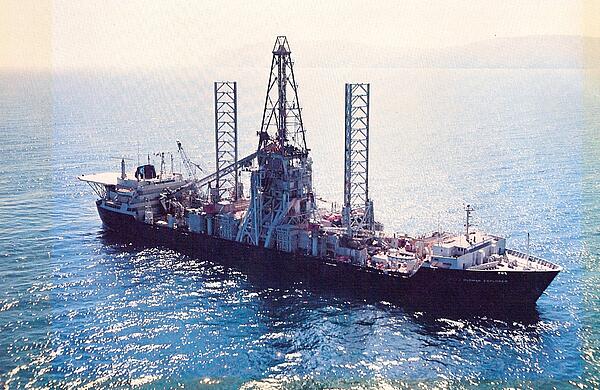Project Azorian
Project Azorian was the name of a secret American operation to recover a Soviet submarine which sank in 1968 in the Pacific Ocean. The U.S President, Richard Nixon, approved the project in 1972. The recovery was carried out in 1974 by the Hughes Glomar Explorer. The New York Times broke the story in 1975, but the Operation remains shrouded in secrecy.
The battle for supremacy in nuclear submarines was of great importance towards the end of the Cold War. By the 1970s, it was believed that both sides knew the whereabouts of ICBM bases and could launch preemptive strikes against such bases in the event of conflict. Ronald Reagan dreamt of constructing an underground missile base where missiles could be transported using underground railways. As a result, the USSR would be unable to track their position, but like the era of the moveable Soviet SS-20, this was yet to come.
In contrast to ICBM bases, nuclear submarines has nuclear reactors that allow them to operate at high speed for long periods of time. It was believed that once a submerged submarine launched a nuclear missile nothing could be done. Both America and the USSR would have been eager to find out the other side’s submarine technology, hence America expending a vast amount of money on Project Azorian.
US Intelligence was able to use audio recordings to track an explosion in the Pacific, which was identified as a Soviet Golf-II submarine (K-129). The K-129 had sunk 1,560 miles northwest of Hawaii. Following the explosion, there was a large Soviet naval presence in the area, which the CIA realised was a task force attempting to locate the sunken K-129. The cause of the incident was unclear, but it was known that it had been armed with three nuclear-armed ballistic missiles and two nuclear-armed torpedoes. US intelligence was eager to gain access to the ship so that it could find out about the guidance systems and compositions of these missiles. Any readable codebooks that were on board would also provide valuable information.

On June 7, 1974, President Nixon personally approved launching the "Project Azorian" mission, with the stipulation that the Hughes Glomar Explorer not begin its work until after he had returned from a summit meeting in Moscow scheduled to last from June 27, 1974, to July 3, 1974. The Glomar Explorer arrived at the recovery site 1,560 miles northwest of Hawaii on July 4, 1974, the day after Nixon left Moscow. Recovery operations commenced immediately to attach the pipe-string collars around the Soviet submarine. Initially, senior intelligence officials were not particularly optimistic about the chances of success for the operation, believing that there was only a 10 percent chance that the operation would succeed.
Nevertheless, the project must be viewed with the context of the Cold War in mind. America’s withdrawal from South Vietnam ended in national humiliation. Nixon needed something to boost the morale of the US intelligence community. Salvaging the K-129 would serve this purpose. Lifting a submarine from three miles beneath the surface would also be an astonishing technological feat. At the time, the salvage operation was the deepest ever attempted.
Despite the use of the ‘Glomar Explorer’ - a purpose-built ship - Project Azorian enjoyed only partial success. By August 1974, the Americans had only brought a small part of the submarine to the surface, although fortunately this section did include two nuclear torpedoes. The bodies of six Soviet navy men were also recovered and given a memorial service.
Because of the covert nature of the operation, Nixon could not exploit the technological feat as a national success. People are still unsure about all the weapons and documents ‘Glomar Explorer’ brought to the surface. Some have assumed that what was brought to the surface was only marginally important, but others have questioned this viewpoint, pointing out that Operation has remained shrouded in secrecy. Why would this be the case if the Operation yielded no interesting information? A crew member of the ‘Glomar Explorer’, David Sharp, went onto write a book about Project Azorian. However, the CIA advised that one third of the book should remain unpublished.
Project Azorian remains a technological milestone as the deepest salvage operation ever conducted. The entire salvage operation was recorded by a CIA documentary film crew, but this film remains classified. A short portion of the film, showing the recovery and subsequent burial at sea of the six bodies recovered in the forward section of the K-129, was given to the Russians in 1992.
See also: Russian Invasion of Afghanistan
MLA Citation/Reference
"Project Azorian". HistoryLearning.com. 2025. Web.
